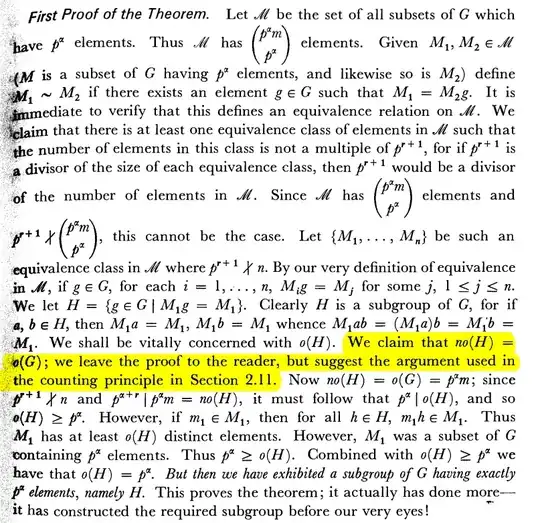The theorem is:
(Sylow's theorem): If $p$ is a prime number, and $p^\alpha |o(G)$, then $G$ has a subgroup of order $p^\alpha$.
Right before the proof, the author has established that if $n = p^\alpha m$ (where $p$ is prime), and if $p^r|m$ but $p^{r+1}\nmid m$, then $$p^r | {p^\alpha m\choose p^\alpha} \text{ but } p^{r+1} \nmid {p^\alpha m\choose p^\alpha}$$ This notation is used in the proof too.
I'm posting an image here, and the highlighted part is what bothers me. I'm sorry I didn't type it all up in MathJax, but as you can imagine it is a lot to type!
Question: How do I prove that $no(H) = o(G)$?
It's probably some class equation or such but I am not very comfortable with those yet and I would appreciate any help! Thanks a lot.
Clarification: $no(H)$ means $n$ multiplied with $o(H)$, the order of $H$.
Update (based on comments):
Herstein's proof never explicitly introduced group actions, and therefore I'm having trouble connecting it to the orbit-stabilizer theorem. Could someone please spell it out? In terms of group actions, what does the equivalence relation $\sim$ (and equivalence classes thereof) in Herstein's proof correspond to? What does $H$ mean? $H$ looks very similar to what a stabilizer of an element is defined as, but it's definitely not the same concept.
